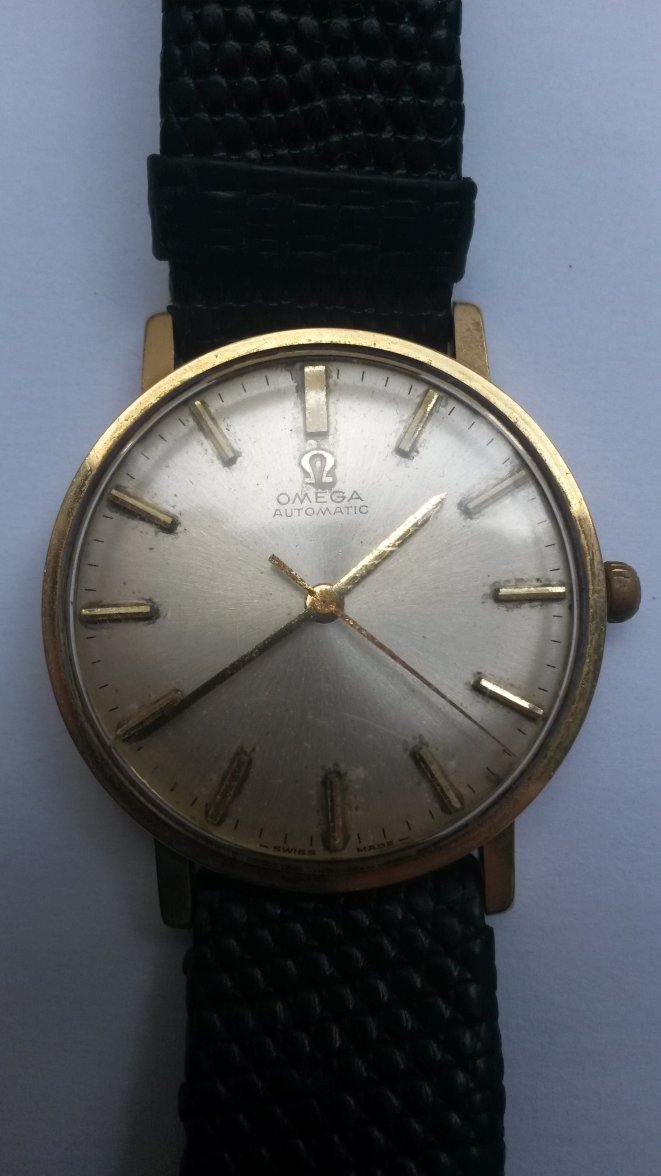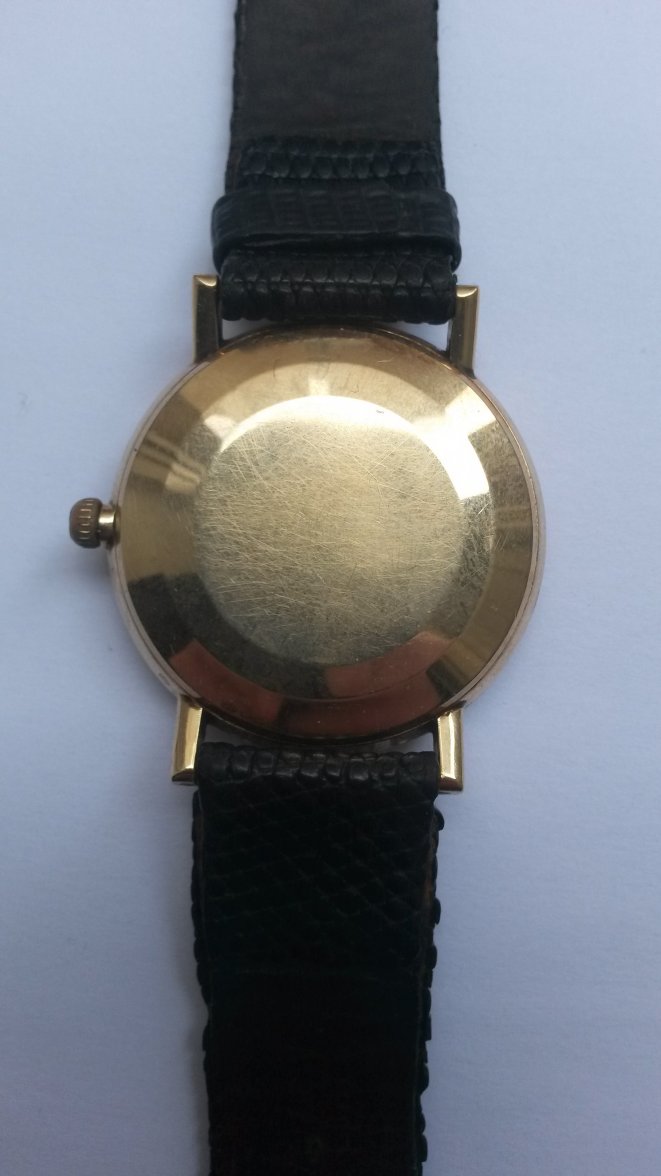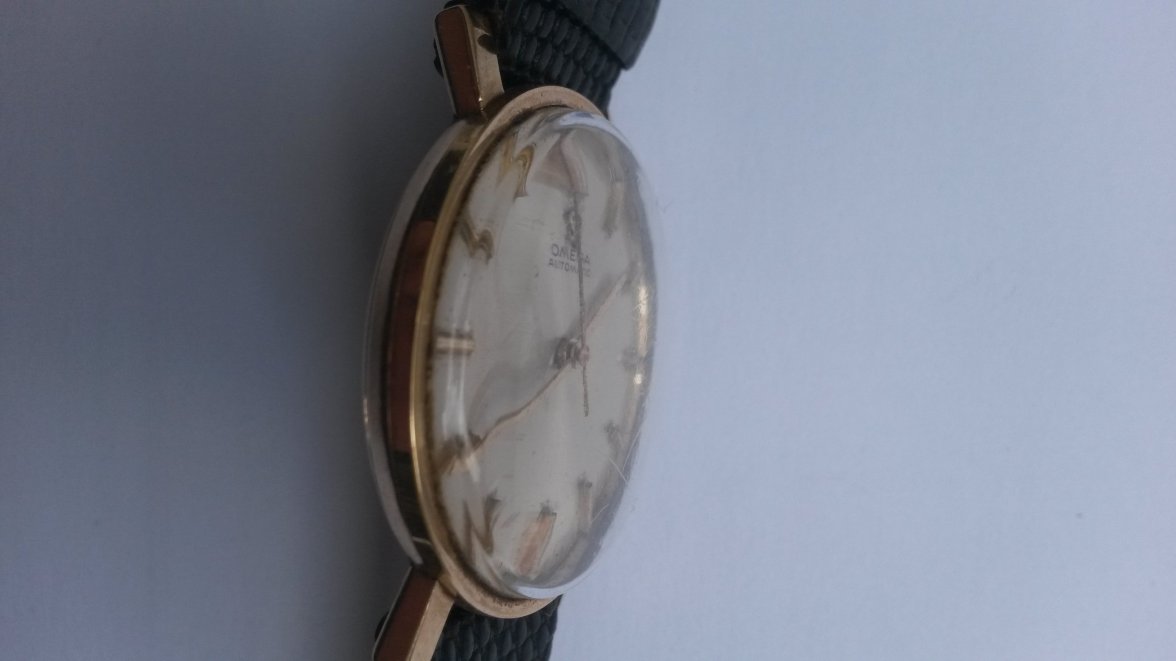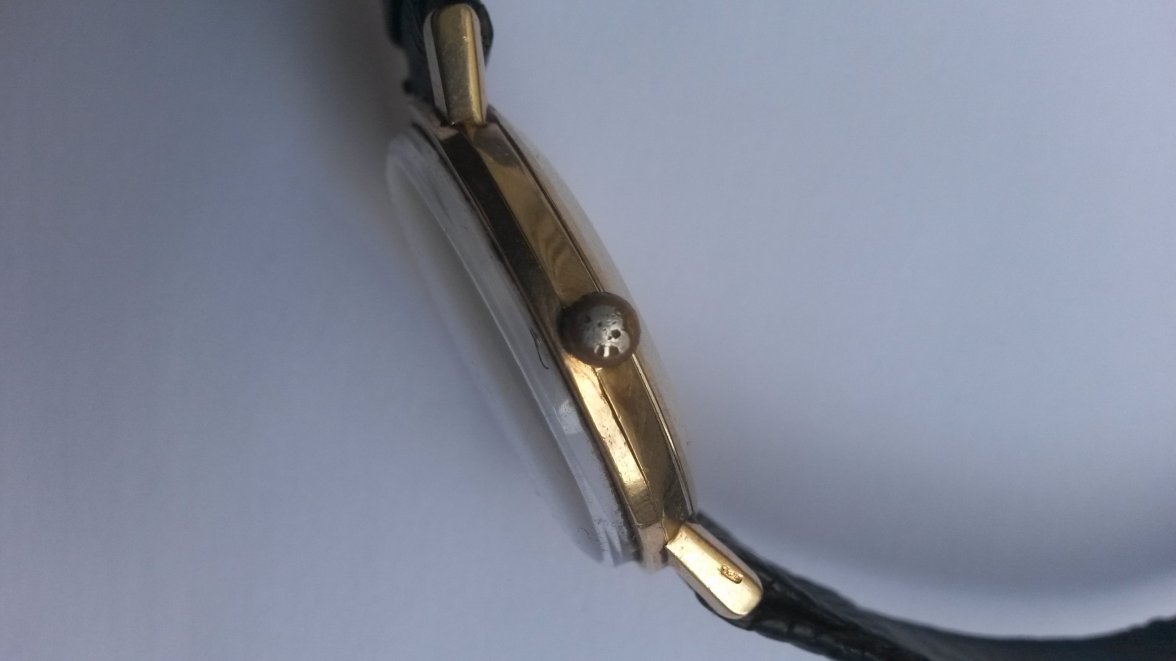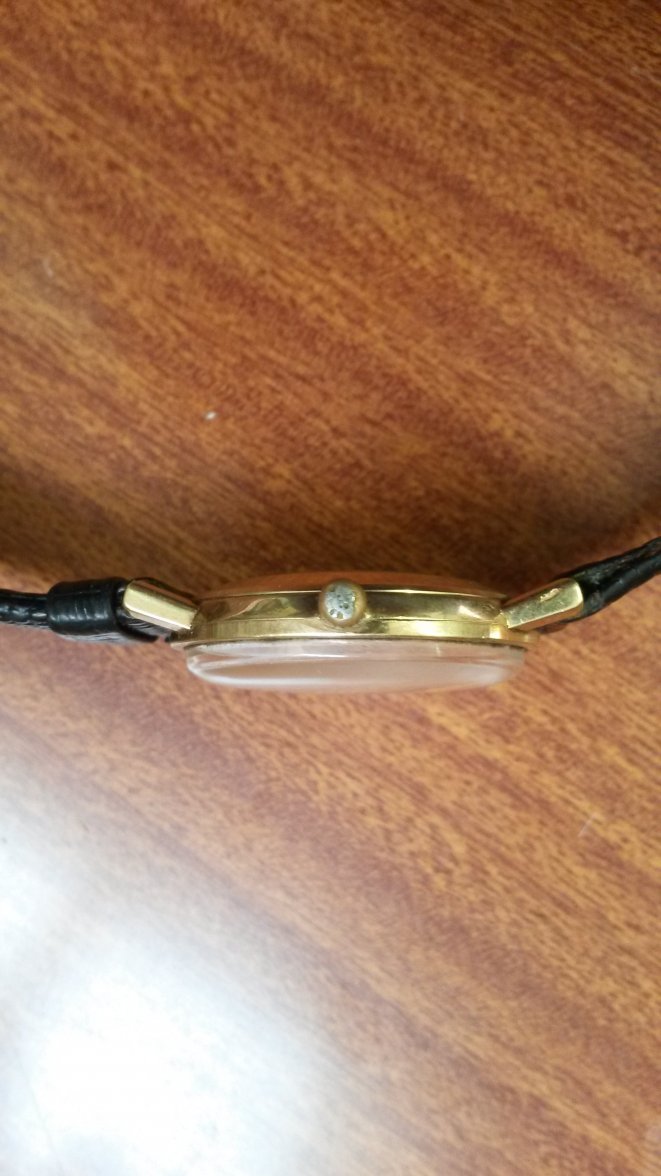- Posts
- 2
- Likes
- 0
proxl
·Hello,
I signed up here to ask this question since I wasn't really successful searching on the internet about this.
This was my grandfather's watch, and he's had it for as long as I can remember back, but I have no idea where or when he got it. I inherited it after he died 10 years ago, but it stayed in a drawer until I found it again now.
It started running immediately again when I took it out, and it goes about 15-20 seconds behind per day, which seems impressive to me considering the circumstances.
It's between 32 and 33 cm according to my measurement, and it looks to be gold, but I wouldn't know how to test it.
I can't open up the back unfortunately, because I don't want to scratch it, but identification isn't that important to me anyway (I'll take it to a watchmaker anyway), although I would be happy if you can tell what model/year it is just from the photos.
And I don't care about its value unless you think it's fake (which would be shocking to me, because it would be my grandfather's style).
I haven't found an image of a watch quite identical to mine on the internet (no date window, no special label, seconds hand in the center, no label, straight lug ends), but many similar ones from the early 60s, so I would assume it's from that era and a lower end model.
My actual question is what you think I should do with it. I would like to have a professional remove the dirt ring around the glass and the dirt around the indices and the omega logo inside the glass, because I think that's not very aesthetically pleasing. Do you think that's a good idea, or is that 'patina' that belongs on the watch? Is that even possible without replacing the whole dial (which I wouldn't want)?
replacing the whole dial (which I wouldn't want)?
I signed up here to ask this question since I wasn't really successful searching on the internet about this.
This was my grandfather's watch, and he's had it for as long as I can remember back, but I have no idea where or when he got it. I inherited it after he died 10 years ago, but it stayed in a drawer until I found it again now.
It started running immediately again when I took it out, and it goes about 15-20 seconds behind per day, which seems impressive to me considering the circumstances.
It's between 32 and 33 cm according to my measurement, and it looks to be gold, but I wouldn't know how to test it.
I can't open up the back unfortunately, because I don't want to scratch it, but identification isn't that important to me anyway (I'll take it to a watchmaker anyway), although I would be happy if you can tell what model/year it is just from the photos.
And I don't care about its value unless you think it's fake (which would be shocking to me, because it would be my grandfather's style).
I haven't found an image of a watch quite identical to mine on the internet (no date window, no special label, seconds hand in the center, no label, straight lug ends), but many similar ones from the early 60s, so I would assume it's from that era and a lower end model.
My actual question is what you think I should do with it. I would like to have a professional remove the dirt ring around the glass and the dirt around the indices and the omega logo inside the glass, because I think that's not very aesthetically pleasing. Do you think that's a good idea, or is that 'patina' that belongs on the watch? Is that even possible without replacing the whole dial (which I wouldn't want)?
replacing the whole dial (which I wouldn't want)?
